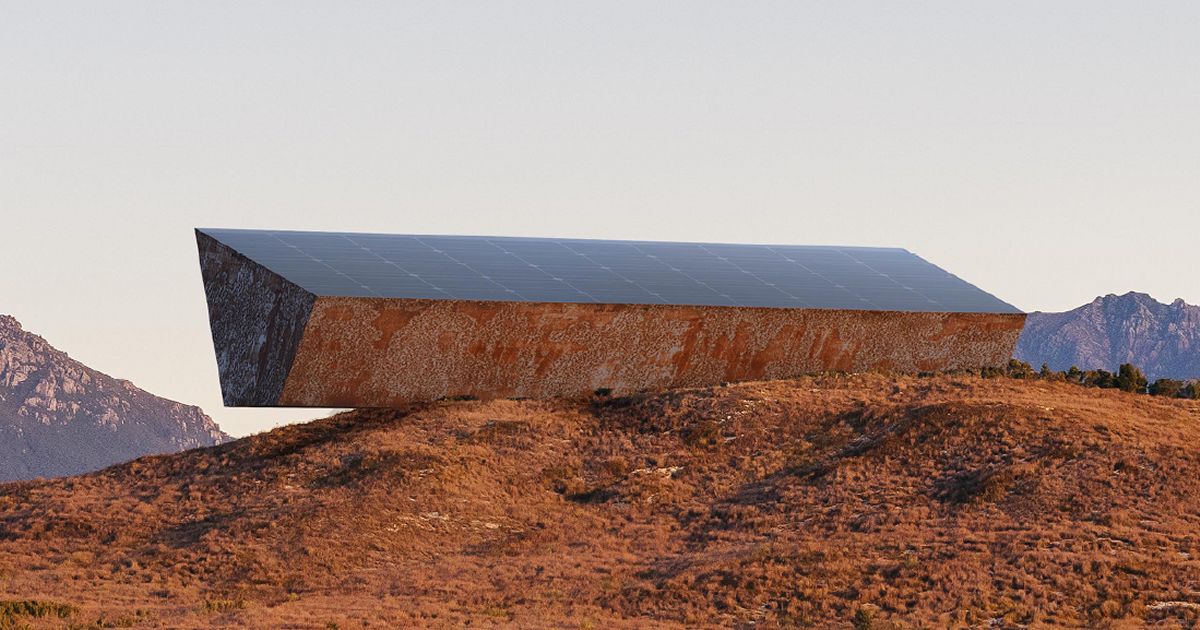
A proposed solar powered “black box” project in Tasmania will record humanity’s progress – or lack thereof – on addressing the climate crisis should it get the green light from West Coast Council.
Late last year, a collective of organisations including University of Tasmania unveiled plans to create “Earth’s Black Box”.
“The purpose of the device is to provide an unbiased account of the events that lead to the demise of the planet, hold accountability for future generations, and inspire urgent action.”
Well, that’s an optimistic outlook right out of the gates. But humanity still generally doesn’t seem to fully appreciate the trouble we’re in.
Hundreds of data sets, measurements and interactions relating to the health of the Earth will be continuously collected and stored in Earth’s Black Box. Unlike the black boxes found in aircraft cockpits, this one will be huge – 16 metres long and 4 metres high. Like an aircraft black box, it will be very sturdy – a 50 mm layer of steel over 200 mm of concrete, then another layer of steel and an inner layer of insulation.
Power Generation And Energy Storage
Within the structure will be a data storage compartment, two power generating and energy storage compartments and an access chamber. This will all sit on reinforced foundations – but beneath it will be 15 metre vertical cavities drilled into the granite.
The cavities will be used in connection to thermo-electric power generation, which isn’t described in detail. On the roof of the structure, 36 solar panels will be installed, further protected by toughened glass.
The idea is Earth’s Black Box will have two primary power modes: high-powered “ingestion” and ultra- low-powered “survival”. In high-power mode, it will collect data when there is sufficient battery power to do so. In survival mode, energy generated from a thermo-electric gizmo will provide electricity to power the smarts that tell the device when there’s enough battery energy to start high-powered data “ingestion”.
The nature, type and capacity of the batteries isn’t mentioned.
Data collected by Earth’s Black Box will be accessible to scientists, students and the general public via an app. Initially, the data will be stored on disk drives, then encoded onto microfiche for longer-term storage. But each decade, the data will be further compressed and engraved onto steel as a form of “permanent analogue storage” – however that works.
“Whilst Earth’s Black Box’s core function is to safely store climate data for hundreds, if not thousands of years, the ideal outcome is that this function is never activated.”
Location, Location, Location
Instead of just being an arty-farty mung-bean-munching tree-hugger thought-bubble thrown out there for a bit of buzz, perhaps the Earth’s Black Box project has legs. A development application was lodged early this month with West Coast Council.
Why Tasmania’s West Coast? The reason given for the location; which will be on the outskirts of Queenstown:
“The West Coast of Tasmania is socially, politically and geographically one of the most stable places on Earth.”
No doubt Tassie’s West Coast Council was pretty chuffed with the its local government area being regarded in such a way. It’s the sort of thing you could put on a shire welcome sign.
Should the project go ahead, this will be the first of a series of Earth Black Boxes to be constructed at various sites. It was hoped this one, dubbed EBB1, would be actively storing an initial set of data points for determining the state of the Earth’s climate and habitability by this month. But even avoiding a looming climate calamity doesn’t stand a chance against red tape, Murphy and general faffing about.
The cost of the Earth Black Box project isn’t clear, nor how it is being funded.
The development application is still within its public exhibition period, which ends next Monday. Further information and supporting documents can be viewed here.


 RSS - Posts
RSS - Posts



Speak Your Mind